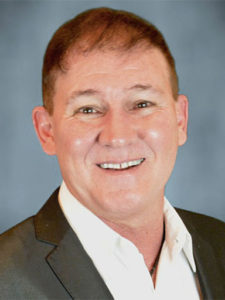
New Methods for PFAS Testing in Air and Exhaust Gases Are Underway
December 3, 2020
By: Michael Krall and Patrick Clark, P.E.
PFAS Compounds and the Current Testing Landscape
Per- and polyfluoroalkyl substances (PFAS) compounds are a large chemical family used in a wide range of consumer products that has been linked to cancer and other health issues. The Environmental Protection Agency (EPA) estimates there are approximately 4,800 PFAS compounds, which makes testing and analysis a complex technical challenge.
While water and soil test methods for PFAS are in use today, The EPA currently has no published test methods for determining the concentration of PFAS in a gas matrix. This represents a critical opportunity since air and stack testing can operate as a way to demonstrate the efficiency and effectiveness of water and soil testing.
Additionally, since a growing number of states are requiring reductions of PFAS air emissions, either through regulations or facility permit requirements, The EPA has begun working with state agencies, laboratories, and test companies to develop these new testing methodologies.
Adapting EPA Method 0010
EPA Method 0010 is an established process for measuring semi-volatile organic compounds. Since PFAS compounds are semi-volatile by nature, its use as a general guide for PFAS measurements in stack gases is appropriate.
In Method 0010, sample gas is withdrawn isokinetically from a stack, and gaseous and particulate pollutants are collected in a multicomponent sampling train. Principal components of the train include a high-efficiency quartz fiber filter, a packed bed of porous polymeric adsorbent resin (XAD-2) and an impinger train. The semi-volatile organic compounds (compounds with boiling points greater than 100oC) are extracted from the sample, separated by gas chromatography, and measured by mass spectrometry.
The EPA plans on designating the method as OTM-45.
Methodology for PFAS Collection
Several key modifications have been made to Method 0010 to address PFAS collection, analysis, and the prevention of sample contamination.
These modifications, as of this publication date, include:
- Pre-cleaning of all glassware using a mixture of methanol (MeOH) and ammonium hydroxide (NH4OH) followed by baking at 350oF
- Use of PFAS-free nitrile gloves for handling sample train components
- No Teflon sample train components, Teflon tape, Teflon sample jars or Teflon squeeze bottles can be used, rather, the use of high density polyethylene (HDPE) is recommended
- Two XAD-2 resin traps are used instead of one with the 2nd trap serving as a downstream back-up
- The 4 impingers are charged with high purity deionized water
- The impinger box contains a mixture of ice and water to cool the impingers
- Recovery of the sampling train is conducted with rinses of the MeOH/NH4OH mixture and segregated into 6 fractions (but combined in the lab and analyzed as 4 separate samples to assess fate, transport, and breakthrough of the PFAS compounds through the train)
- As many as 5 blanks are collected to demonstrate reagents and sampling components are PFAS free
Looking Ahead
Demonstration tests are currently being performed to evaluate PFAS control processes in addition to the sampling and analytical methods. The EPA hopes to use these findings to publish Other Test Method (OTM) 45, which can then be used in PFAS test programs.
As Montrose Environmental and regulators use and evaluate these methodologies, procedures will be updated to ensure accurate measurement of PFAS at the detection limits required to evaluate air emissions.
 Michael Krall
Michael Krall
Michael Krall brings 40 years of industry experience to the Montrose team where he currently works as Vice President, Technical. Michael holds a degree in Chemical Technology from Broome Community College and a Bachelor’s Degree in Chemistry from State University of New York at Oswego and is an EPA-Certified Qualified Energy Assessor (Region 1).

Patrick Clark, PE
Patrick Clark brings over 25 years of industry experience to the Montrose team where he currently serves as Vice President of Ambient Air and Emerging Technology. Patrick holds a Bachelor’s of Science Degree in Chemical Engineering.


